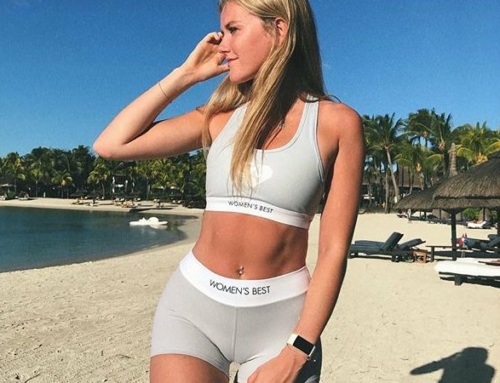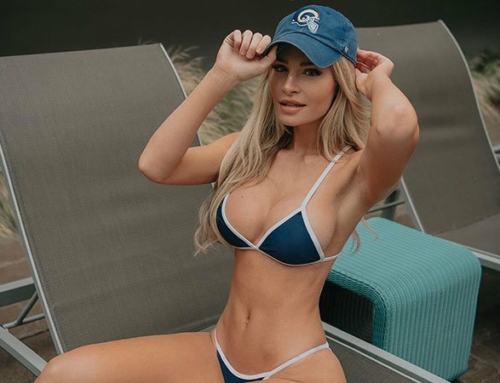
June 28 2016
Music Sounds Better With EU
Beneath a hand painted sign that reads “together we can make change,” a security guard raises his megaphone. “I am sorry to announce that Britain has left the EU. I repeat, I am sorry to announce…” It’s 5:30 a.m. on a balmy Friday morning, and Glastonbury isn’t so much waking up to the bad news as going to bed on a nightmare. “I know why it happened,” says another security worker. “It’s just like everything: corruption, money. Things are getting privatized and taken away from the people. Now it’s underhanded games. It’s evil, it is.”
Up a muddy slick by the Sonic Stage, Liverpudlian students Tristan and Sophie look horrified when they hear the news and offer a surprisingly sharp critique (given that they’ve just tumbled out of the silent disco). “I think a lot of me friends will lose their jobs,” says Tristan. “The single market’s probably one of the greatest assets Europe’s got, and you take the advantages with the disadvantages.” He laughs in shock. “I feel sick about it.” An Australian thirtysomething named Turner has a different take, declaring that it’s a good thing, because the rest of Europe will see that they don’t have to pay money to Brussels “unnecessarily.” When pushed, he admits that he just heard that off “some fella” at the silent disco headphones return booth.
A few restless hours later, reality lurches sharply back into focus when a bloke in an adjoining tent declares, “Good morning, racist Britain.” Prime Minister David Cameron has now resigned, and everyone’s talking about the shambles in Westminster, though suggestions that the general festival mood is downbeat are overstated. It’s more that even the vaguest display of unity—of which there’s tons at Glastonbury—becomes painfully poignant: Walking past the Leftfield tent, Glastonbury’s center of political debate, Billy Bragg sings, “I’m not looking for a new England…”
Despite the festival’s left-wing credentials, it’s not too hard to find Leave voters. Outside the West Holts stage, Denise and Jane, both in their 50s, are split over the referendum. Jane voted out, as “a protest vote against the way the EU is run.” She doesn’t think that the likes of UKIP leader Nigel Farage and potential Tory leader Boris Johnson can run the country any better than the EU, but says she won’t be able to know whether she regrets her decision “for 20 years.” Denise voted in, mostly because she was “scared to leave” and thinks it should never have gone to a public vote: “How can anyone vote on a spectrum of yes or no?”
Festival goers take part in a EU protest at Glastonbury. Photo by Matt Cardy/Getty Images.
For those in search of a more nuanced understanding, Saturday lunchtime’s Leftfield tent debate—“EU Ref: What Now for Europe and Britain?”—is the place to be. Economist and activist Dr. Faiza Shaheen urges everyone to have difficult conversations with their Leave voting friends and family. Political commentator Neal Lawson calls for empathy for Leave voters, and slates Britain’s politicians as “technocrats and managers who don’t know how to speak about love and compassion and belief in people.” Molly Scott Cato, Green Party member of the European Parliament for the southwest of England and Gibraltar, earns huge cheers when she calls for an inquiry into foreign-owned newspapers, while Norwich’s Labour MP Clive Lewis delivers a furious and brilliant speech, comparing Brexit to 1945 in terms of historical import. Back in London, his fellow Labour MPs are resigning en masse to demonstrate their lack of faith in party leader Jeremy Corbyn. Here, Corbyn’s name alone draws huge cheers in the packed-out tent, and Lewis gets a rapturous response for saying that he will continue to defend Corbyn’s leadership of the Labour Party—a loyalty backed up by his immediate recall to London as the crisis intensifies. By Monday Lewis has been made Labour’s new shadow secretary of state for defence.
It’s extremely weird to be on a 900-acre farm in Somerset while the UK’s political future is crumbling. Bat for Lashes’ Natasha Khan sums up the mood well (and, like many artists, nods to the recent mass shooting in Orlando) when she introduces “What’s a Girl to Do” with a sigh: “Over the last couple of weeks, I feel like the title of this song speaks to me more than ever.” The dense volume of festival goers means that mobile connections drop out every now and then, making it hard to stay abreast of a rapidly changing situation. “Another MP gone!” a man tells his friends on the fringes of the crowd for PJ Harvey on Sunday, following that day’s 10th resignation from the Labour shadow cabinet. For perhaps the first time ever, what’s going on outside Worthy Farm’s giant fortified fence feels stranger than everything that’s happening within it. —Laura Snapes
Top Three Vince Staples Jokes
3. “Everybody say fuck the police!”
2. “We’re all in this together. We’re a family but we all look different. We’re like a foster home.” (DJ: “We’re like the EU.”)
1. “Lot of mud here. ’Cause at Glastonbury, everyone is brown.”
Humans of Glastonbury, Part I
Chris: “We’ve lived in rural Cheshire for most of our lives. When I was working, I was the manager of a steel company, but I’ve just retired and taken up a fantastic hobby: beekeeping. I’ve got 42 beehives and they are all misbehaving. They go robbing other bees. Our first Glastonbury was about 2006 and we try to come every year. Some of the highlights are little places like this, where you go and talk to people that make slates [in the craft area] or strip the willows. Of course, it has changed over the years—it’s far more commercial now. But in some ways, it’s just like Glastonbury used to be years ago: a meeting point. You can just imagine people doing this centuries ago—a meeting of the clans, almost.”
A Stateswoman Speaks
After lumpen trad-rockers Catfish and the Bottlemen vacate the Other Stage, half of the crowd follow suit, leaving a surprisingly thin gathering for PJ Harvey. It’s a shame—not only is she a thousand times the rock star they’ll ever be, but as Harvey and her 11-piece band pace onstage, wielding marching drums and brass instruments, it becomes clear that the live show clarifies some of the confusion around the purpose of her new album, The Hope Six Demolition Project. Dressed like a gothic peacock, Harvey feels like the narrator of these songs as much as a singer, inflicting her performance with subtle choreography. For “Ministry of Defence,” she raises a long black leather gloved hand to the sky, and stares unblinkingly. During “The Words That Maketh Murder,” sung in a thrillingly unhinged warble, she stares at her hands, horrified, at the line “I’ve seen soldiers fall like lumps of meat,” and you believe she can see them. She even makes a precise art of pulling her long hair off her face.
PJ Harvey. Photo by Ian Gavan/Getty Images.
Even though the setlist mostly spans White Chalk to the present day, the selections manage to straddle the very best of her styles from a 28-year career: The licked delivery of “The Glorious Land” brings to mind the campy derangement of her albums with John Parish, who’s stood to her right, while “The Ministry of Social Affairs” has a swagger straight out of the Rid of Me days. Harvey’s latest incarnation, as a stateswoman with a keen interest in how history never learns from its mistakes, fits the weekend’s events with grim perfection. When she leers “this is how the world will end” from “A Line in the Sand,” it’s genuinely chilling, and she acknowledges the swift crumble of British politics with a reading of John Donne’s “No Man Is an Island,” written in 1624. Other than introducing the band, it’s the only thing she says to the audience; she’s clearly relishing the show, but it’s so poised that it could benefit from loosening the script once in awhile.
A tantalizingly brief hit parade comes at the end of her set, when she plays a one-two of “50ft Queenie,” screaming like a siren and ricocheting off the front row of her band, and then “To Bring You My Love” in all its depraved desert spiritual glory, that incredible guitar riff sidewinding like a python. It’s one of the weekend’s most rapturous moments, and it ends with Harvey facing the back of the stage, her band facing outwards. None of them look at her, staring straight ahead with the severity of Buckingham Palace beefeaters. For all that her current project comes into focus tonight, she’s also still addictively unknowable. —LS
Triumph of the Polysexual Trans Army
The heart of queer culture at Glastonbury is NYC Downlow, a gay nightclub in the southeast corner’s Block9 district. Described in the program as “an army of 50 pansexual go-go boy butchers and a polysexual Meatpacking trans army,” this fond tribute to the gay havens of ’70s New York—particularly the Lower East Side—brims with meticulous details, including a winding entry line flanked by salacious dancers and hanging sides of beef and, in the smoking area, an authentic Camel billboard with the slogan, “Try it, you might like it.” Inside, more dancers dangle from two steel cages, while onstage, shrouded in smoke, is the main spectacle: several more performers, mostly in drag, who strut, vogue, shimmy, flash, and kiss as a DJ plays liberatingly oppressive house and disco.
Around 2:45 a.m. Saturday night, with hundreds lining up for an elusive Black Madonna spot, the master of ceremonies strides on to introduce the dancers. “We’re celebrating gay pride,” the MC, wearing a frilled pink shirt and white jacket, adds. “But also, we are celebrating Mr. David Bowie tonight.” Cheering, dancers onstage and off throw their hands aloft; as “Let’s Dance” drops, the housey haze lifts. Still clutching the mic, the MC sings a seductive karaoke, teasing the crowd with a finger-wagging dance and prowling across the stage, tailed by six pink spotlights. “David Bowie, you are missed but we are with you in spirit,” is the final word, and it’s never truer all weekend.
The genius of NYC Downlow, which encourages attendees to don stick-on moustaches on entry, is not just to spotlight Glastonbury’s queer community but, in light of the Orlando tragedy, to playfully demystify queer culture for whoever winds up inside. Even if the “Meatpacking trans army” fails to attract meeker types, however, there is Pride solidarity elsewhere. After alluding to vague present-day spectres, Adele makes a rare political gesture on Saturday night, wishing the crowd a happy Pride. And Olly Alexander, Years & Years’ singer, delivers an emotional speech at the Other Stage: “As queer people, we know what it’s like to be scared,” he says. “It’s part of our everyday life. Tonight, Glastonbury, I would like to ask you to join me, on Pride weekend, and say, ‘No thank you, fear.’ Shove a rainbow in fear’s face.” And with that, a fucking massive rainbow glitter cannon explodes over the crowd, sparkling up the mud for the remainder of the weekend. —Jazz Monroe
The Baptism of a Queen
“You want to fight, rain?!” says Christine and the Queens’ Héloïse Letissier, flexing her muscles skywards and revealing a wrist tattoo that reads “we accept you.” It feels right that Christine and the Queens are making their Glastonbury debut in the pissing wet; not only is it a time-honored tradition at a festival so massive each field seems to have its own microclimate, but her set feels like a baptism—for her as much as us. Thousands of people sing along to “Tilted,” a song about embracing queerness. Letissier and her dancers move in slippery formation, always perfectly off-kilter, incorporating mime, “Thriller” vamps, Pina Bausch stumbles, breakdancing, and vogueing. This is Christine and the Queens’ soft power: On a day when Britain awoke to the news that 52 percent of the country had voted to leave the EU, she doesn’t need to make any explicit statement about unity to get the point across. It’s all there in the generosity of her performance, giving each dancer an individual spotlight to shred for a moment, and throwing in medleys incorporating disco and house—alternative utopias formed in the face of adversity.
The stage is strewn with flowers, and after a gorgeous rendition of “Saint Claude,” Letissier picks up a sunflower and compares it to Beyoncé, and then a lily to Rihanna, biting it and cheekily admitting, “I wish that I could eat Rihanna.” She bends down again and picks up a long twig. “Oh look, this is me! I’m still there, I’m just trying really hard to blossom.” She strains noisily. “But you know what’s good guys, I get to be in the same bouquet. There’s no way to be perfect with me, just be yourself, come as you are.” In the wrong hands this routine would be grating, but with her BBC Radio 4-honed English, she’s charm incarnate. As she closes the set it’s hard to imagine an artist more in control of her world. That is, until she waves goodbye and accidentally drops the mic. She looks bashful, but she actually couldn’t have planned it better. —LS
Humans of Glastonbury, Part II
“Half of us are from the LGBT community, and it hurts a lot. It could have been any one of the clubs that we were in. It was heartbreaking that that level of discrimination can happen.”
Fields Without Borders
“I want you to know that when you leave here, we can change [the Brexit] decision,” Damon Albarn tells a bedraggled crowd of early birds on Friday, opening the Pyramid Stage with the reunited Orchestra of Syrian Musicians. It’s improbably enlivening, post-Brexit, to witness the virtuosic 90-piece ensemble, which was scattered earlier this decade by Syria’s civil war. The orchestra’s nimble, Arabic folk songs take center stage, while Albarn, an intermittent presence, leads a sweet version of Blur’s “Out of Time” and celebrates the band’s “miraculous journey” to be there.
Elsewhere, respectable billing on the main stages ensures generous crowds for more acts otherwise absent at UK rock festivals. At the Pyramid on Saturday, Baaba Maal, the Senegalese singer and activist, wears a long gray gown and an expression of natural ecstasy, playing songs ebullient and galvanizing enough to warm a muddy crowd savoring the rare sunshine. Later Saturday, Japan’s Shibusashirazu Orchestra bring together a 14-piece free jazz band; interpretive dancers in loincloths and white body paint; an exuberant bandleader in an undrawn kimono and red thong; and two women on podiums, whose eerie dance ritual is conducted with four oversized bananas. The set feels like an eccentric variety show, in which the acts re-emerge to perform a maximalist (but impeccably rehearsed) encore. A more measured performance comes from Anoushka Shankar, the British-Indian sitar player, who speaks of “transcending boundaries” and “breaking down walls” as she plays elegantly entangled songs from her new album, Land of Gold, written in response to the present refugee crisis. And the Blues Stage, designed slightly distastefully as a shanty town, is just one source of the distorted reggae that blasts between sets across the site, ensuring Glastonbury’s beyond-the-headliners eclecticism lives on in the details. —JM
Adele. Photo by Ian Gavan/Getty Images.
Adele by the Numbers
Seconds of Adele’s set before fireworks go off: 35
Ad-libbed swears in Adele’s first song: 2
Minutes taken to move 20 meters through Adele crowd: 4
Estimated number of people watching Adele: 150,000
Paying Tribute to Lost Heroes
Glastonbury is in mourning for a terrible number of fallen institutions this year. On Thursday, there’s a silent vigil up at the Park Stage for Labour MP Jo Cox, who was killed in the street a week prior, and the Glastonbury Free Press papers the site with a tribute to her the following day. Artistic dedications to Bowie, Prince, and Lemmy top the three largest stages, and Bowie’s lightning bolt adorns the faces of approximately five percent of all festival goers. Formal tributes are pulled off with varying degrees of success: Friday’s Glastonbowie Karaoke is drowned out by the unceasing blasts of Tame Impala from the Pyramid Stage. (Plus, it turns out that nobody actually knows the words to the verses of “Space Oddity.”)
Hot Chip’s Prince tribute up at the Genosys club on Friday night feels less like a DJ set and more like a Spotify playlist, but when it kicks off with “1999” and never stops banging, nobody’s complaining. The mud is cement-thick and the mood religious, making for a simple, perfectly pitched tribute (and a serious butt workout). The dangers of overthinking things are evident in a Saturday night performance of Philip Glass’ fourth symphony—based on Bowie’s “Heroes”—which has a stunning laser show but isn’t really a midnight affair. More fitting is the master of ceremonies who performs “Let’s Dance” at drag haven NYC Downlow later on. And during Sunday night’s headline set from Coldplay, where they would usually cover “Heroes,” the band instead opts for “Boys That Sing” by Viola Beach, a young indie group whose four members (and manager) were recently killed in a car accident. Martin recalls how Coldplay got their start on one of the festival’s tiny stages, and how stunned they are to have worked up to headlining for a fourth time. For “the hope that we felt in them,” Martin says, “we decided that we’re gonna create Viola Beach’s alternative future for them and let them play a song. Get it in the charts tomorrow if you feel like it.” Footage of the young band playing the song live is projected onto the backdrop behind Coldplay, who don’t need to play “Heroes” for its spirit to be felt. —LS
Voice of a Generation
With their recent second album, the 1975 risked alienating their many orthodox-indie fans but wound up converting them to a slinkier, funkier new formula. Frontman Matt Healy, taking the Other Stage on Saturday before a massive crowd, has the confidence of a validated renegade, not to mention that of British pop’s latest certifiable heartthrob. “Ladies and gentlemen, please welcome your new favorite band, the 1975!” he teases as he walks on, before indulging in some effortless crowd play: “I’m gonna put sunglasses on now—for tactical reasons but also the rockstar thing.” Shades on, he gives the camera a smoldering stare; the crowd erupts. He ought to be irritating, but while the high-stakes slot is a natural fit for the Cheshire four-piece, it’s intriguing to see Healy, whose head-to-toe white outfit evokes Elvis on a spiritual retreat, wear a perennially crestfallen expression. It’s improbably endearing, augmenting his finesse as a frontman with a wounded charm. You sense that this is the guy who’d be most welcome as a future headliner.
“What do I know?” he says mid-set, going off script. “I’m a pop star in a suit. I don’t know anything. But what I feel is there’s this sentiment of anti-compassion. This older generation has voted in a future that we didn’t fucking want. When you stand on a stage like this, in front of liberal, beautiful people, it’s hard to say nothing. Glastonbury stands for everything that this generation wants.” Moments later, as “If I Believe You” slips into its groove, a complete double rainbow appears overhead. —JM
Cult Crossover
Ten years into her career as Bat for Lashes, Natasha Khan, who plays Sunday in a pearl blue dress and pink veil, is rising fast from a cult crossover act into a national treasure. Her ascendency is crystallized at the John Peel tent, where lucky viewers find shelter from a punishing rain storm while latecomers persevere outside regardless. The sense of sanctuary is fitting, because Bat for Lashes’ new album The Bride takes gothic balladry somewhere so deep and lugubrious it seems to expand the form. Few other live performers could match Khan’s enactment of it—her face a tale of longing, her music a storm of emotions, swirling between tragedy and rapture. —JM
Humans of Glastonbury, Part III
Paul: “I wouldn’t say I always go shoeless at Glastonbury, but generally, I don’t wear shoes. I don’t really separate my Glastonbury experience from the rest of my life—I first came to one when I was quite young and traveling in the UK [from Australia]. I think I’ve maybe done 12 or 14. It gets more and more relaxed every year. I literally don’t see the commercial side of it.”
Four Tet’s Four Sets
On Saturday night, as Adele makes her debut festival appearance over at the Pyramid, Four Tet is quietly moving on to his third set of the weekend, keeping the louche Beat Hotel bar ticking over and, now and then, unleashing arms-in-the-air tropical funk bangers. Perhaps for necessary moral uplift, he’s spinning alongside Floating Points, who also joins him in legging it across the site straight after, where they precariously complete a six-hour jungle b2b with Ben UFO. While nocturnal DJ antics are par for the course, it’s worth considering Four Tet’s previous 24 hours: After a 1 a.m. set in the Wow! tent, which went out live on BBC Radio 1, he rose the Glastonbury undead with a miraculous “Morning Side” show at the Stonebridge Bar, a tent in the Park area with a bejewelled ceiling and godlike faces carved into wooden panels. His delicate blend of international funk and soul, Beatles and Radiohead, and chilled reggae and house went down like a refreshing smoothie from the juice bar down the slope. After lulling us into false security for 90 minutes, he pulled the trigger in style, mixing Justin Timberlake’s “Like I Love You” into “Love Cry,” fueling the exhausted crowd for the full day ahead. —JM
Skepta. Photo by Samir Hussein/Redferns.
Grime Time
Despite Adele’s incomparable hugeness, the talk of the festival is Skepta, a grime superstar whose Pyramid Stage booking is testament to his enormous following among Glasto’s growing core of aspirational twentysomethings. His black shades, bare chest, and unbuttoned military jacket make him look like a swaggering prince; his crowd encompasses a few hundred rows of aficionados and casuals, pointing gun fingers and swigging cider from petrol canisters. Skepta’s ambivalent approach to winning converts—repeated dedications to “the real grime fans” are, while welcome, borderline antagonizing—only enlivens diehards; a circle pit breaks out for “It Ain’t Safe,” cuing loud groans from those too far back to join in. The chemistry onstage is electrifying: Crew members ride around on pushbikes, and it’s warming to see the man himself, usually stern and avuncular, beam with glee as Jammer and Novelist bound in to help close the set.
Afterwards, the grime crowd migrates to the Sonic stage for Novelist’s proper set, which includes a series of “Fuck David Cameron” chants—likely the most enthusiastically received crowd interaction all weekend. Skepta makes a predictably riotous cameo, before a remarkable festival getaway with his nine-person crew in the back of a buggy. They miss shows that night from Lady Leshurr, who wears a permanent grin as her young fans pound the Sonic soil and inhale copious amounts of nitrous oxide balloons, as well as Stormzy’s new festival set, now a hits-only affair, where the crowd busts open mosh pits at the drop of a snare and chants Stormzy’s name. They make a case that grime’s strong billing this year should be no one-off. —JM
Sisterhood of the Unraveling Plans
The biggest story coming into the festival was the introduction of a new area, the Sisterhood, which was open to women, trans, non-binary, and female-identifying people only, and aimed to encourage community and offer classes in skills such as power tool use. Internet bottom-feeders decried it as “reverse sexism,” while others more reasonably lamented the fact that there was demand for such a thing to exist in the first place. In what more cynical organizations would surely interpret as a comment on the health of mainstream feminism, it was, in short, a bit of a mess. After a very long, very muddy walk to the Sisterhood’s home in Shangri La, the furthest corner of the festival, a security guard said it was closed until further notice. Two other reporters said that they had been met with the same news at different points over the weekend. Clearly, the dream of a feminist haven where we can cackle about men while wielding drills with massive hangovers is still just too good to be true. (To the Sisterhood’s credit: Noisey actually made it there when it was open and wrote a delightful piece about it.) —LS
Grimes’ Next-Level Rave
Grimes’ strafing dance pop would be equally at home at Glastonbury’s trance haven the Glade, though she’s considerably more ambitious than the shipwrecked rave casualties who populate that tiny stage. Before “Scream,” she explains that Taiwanese rapper Aristophanes can’t be here to do her part and apologizes for not being able to sing the Mandarin lyrics. “I do the Russian version,” she says. “I hope you don’t mind.” She then proceeds to spend the next few minutes sprinting between her synth setup and seemingly expelling every ounce of wrath from her body, snarling, roaring, and rolling on the floor, before joining her dancers for a twitchy and captivating rendition of “Ave Maria.” Nobody minds.
In one way, it feels unfair that she feels she has to do absolutely everything onstage to be perceived as being in control of her art—and occasionally, all the effort thins the combined effect—but it’s also staggering to watch her exert tyrannical control over everything, moving between roles in hyperspeed. Having Grimes headline one of the festival’s key stages on the last night feels like a victory lap for the queered synth-pop that’s made Glastonbury 2016 so much fun, and she owns it, tumbling and whirling through “Oblivion” as the crowd go ape, and closing on “Kill V Maim,” which deserves to join “Born Slippy” and “Hey Boy, Hey Girl” in the pantheon of feral, next-level rave that Glastonbury is famous for. —LS
Years and Years’ Olly Alexander. Photo by Ian Gavan/Getty Images.
The Future Headliners
Witnessing the swathe of young British pop acts making their mark on the festival feels like watching a wave of future headliners being minted. Shura flits between guitar, synths, singing, and endearingly goofy stage banter, and sounds the way Kylie Minogue might if she made a disco record with Dev Hynes. Chvrches used to be a little shy live, but singer Lauren Mayberry now high-kicks and fronts like a superhero in a white dress and platforms. Wolf Alice annihilate their debut Pyramid Stage set, while Years & Years explode a rainbow glitter bomb over the Other Stage. Their frontman, Olly Alexander, is fucking resplendent in a white sports jacket covered in hundreds of rainbow tassels, which fan out as he twirls, resembling a beautiful eagle-parrot-type bird of pride. It’s a proper pop spectacle, his pin-sharp falsetto undented as he vogues with the band’s dancers, who then pick him up and twirl him over their heads during closer “King,” before setting him down to collapse and pulse all over each other in a way that’s both worshipful, weird, and erotic. Compared to the too-cool posturing of the weekend’s young guitar acts like Blossoms, Jake Bugg, and Catfish and the Bottlemen, none of these artists care to conceal how much fun they’re having. Playing it cool is boring. —LS
Humans of Glastonbury, Part IV
Ben (on left): “This year, the crowd’s more commercial, more middle-upper class. Less hippies, less freewheelers. I do think the change reflects something about the world. People are becoming less interested in the sacred space. They just wanna get fucked up. They’re slipping further and further away from nature and reality. [A man walks by offering mushrooms; Chris and Ben decline.] In the UK, you grind, you work hard, and this is the only thing you look forward to. I do mostly kitchen work—whatever comes my way. Kitchen goblin, kitchen slave, kitchen bitch. Nothing special. I also paint, I’m an artist. I’m always cooking, drinking with my mates, painting, skating. Easy life. When I don’t have a job, that is.”
Source: Pitchfork – Features





